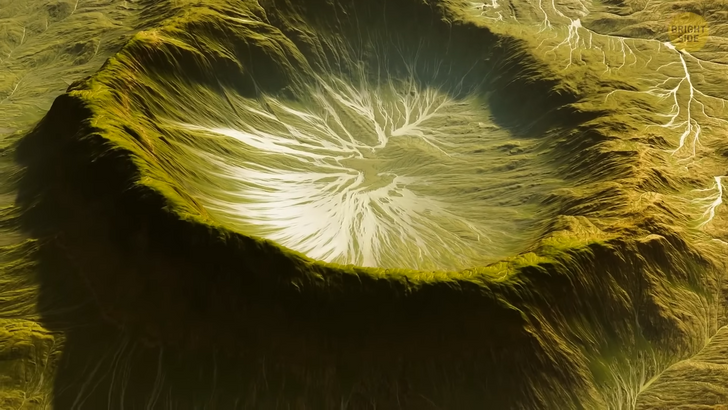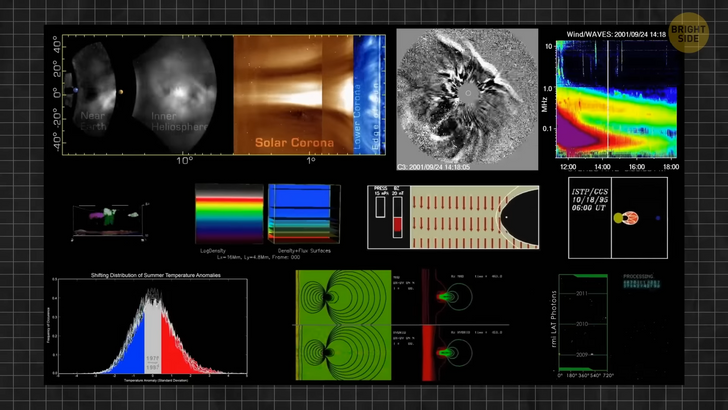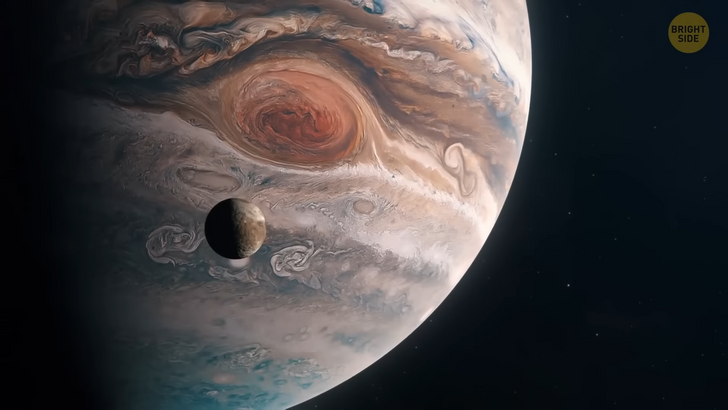16 Stories From People Who Had a Funny Experience With a Rich Person

It’s a clear night, and you are outside looking at the stars. The Milky Way alone seems overwhelmingly huge. You check on your phone and discover that the galaxy you’re in at this exact moment is 100,000 light-years wide.
For scale, 1 light-year is already a very long distance. For example, it takes 4.2 light-years to go from Earth to Proxima Centauri, which is the closest star to our planet other than the Sun. So 100 thousand light-years is way more than we normal humans can fathom.
And that’s just one galaxy. There’s a whole lot more out there. Now, looking at this data it seems pretty unlikely that we’re the only life form out there, doesn’t it? But how come we’ve never found anything else so far?

Let’s get one thing out of the way: extraterrestrial life doesn’t necessarily mean we’re talking about little green people. It can also mean microorganisms, bacteria, and plants that can be found on other planets. The truth is, there is a big spectrum of possibilities for life on another planet. And taking into consideration that there are up to 50 billion planets in the Milky Way, it’s very unlikely that we are alone in this big wide Universe.
And what does life on other planets look like? This is what we’ve spent years trying to figure out. Go ahead, think with me. A planet may be lifeless today, but it could have traces of organic matter or fossils, meaning that some life form was able to thrive there once. And it could also be that there are planets out there containing life with complex biochemistry, meaning they could have fauna just like we have on Earth — although probably not the same.
NASA created a special science that is dedicated to studying life forms outside of Earth. It’s called astrobiology. Ever since the space agency was created back in 1958, it didn’t take long for it to start looking for extraterrestrial life. They quickly built an action plan. First, they needed to understand how life on Earth was formed and secondly, how it could have formed on other planets. The first time NASA tried to look for life in outer space was in 1976.

The Viking lander blasted into space headed toward Mars. There were high expectations that humanity would find the first proof of extraterrestrial life. Unfortunately, the lander came back with images of a planet that looked barren and bleak and scientists were extremely disappointed. Scientific conclusions on whether life could be detected over there were confusing.
But hey, you need to know what you’re looking for to find it, right? The “failure” of the Viking mission served to heat up debates amongst NASA scientists to define what life actually meant. And it also served to call their attention to a small, but very important detail. Spacecrafts departing from Earth usually transport earthling microorganisms and bacteria unintentionally, as they remain attached to the vehicle.
It turned out that these bacteria could contaminate scientists’ samples, so they needed to consider this. All of this made Mars expeditions take a backburner on NASA’s short-term plans. There appeared a new priority-first question: what are the types and stages of life that space programs can hope to identify?
Scientists might have encountered life on other planets, but they weren’t able to identify it as life. That is why NASA began to study our own planet better. They studied everything, from ancient life forms that lived billions of years ago to living creatures that roam the planet today. They understood that the search needed to happen inwards as well as outwards.

Let’s take a look at the development of Earth’s life from its inception. Imagine that this development can be represented as a ladder or stairs, and each developmental stage is a flight of the bigger staircase. First, we would see basic chemistry. A soup of loose chemical elements like the ones we see in the periodic table.
But they need to assemble themselves into more complex structures to be able to self-replicate, change and evolve. This would happen in the second step, where we start to see the formation of microscopic organisms. In the third step, these cells combine to become multicellular beings, allowing for more complexity and variety. The step above sees species that can evolve big brains, enabling the use of tools, culture, and shared knowledge. That’s where humanity is located.
Looking at this ladder, one might ask: so what does it take for a multicellular organism to evolve into fully formed humans? This is what is called “the great filter”. It’s a huge evolutionary jump that takes a lot of effort and the perfect environmental conditions for it to happen. And given that we haven’t heard of any other extraterrestrial civilizations out there, it might be that we are the only ones that were able to make this jump.

After all, how likely is it that we’ll find life outside of Earth that is similar to us? That depends on how many planets there are out there in their star’s Goldilocks zone — the area around a star where water can be liquid. And because stars come in all sizes and configurations, this zone is different for every star system. But that’s not the only criteria we know for the existence of life. We usually look for three things to detect life: liquid water, methane, and oxygen.
Water is what allows for chemical components to mingle and connect, forming multicellular beings. Methane is produced by the decomposition process made by bacteria and oxygen is the by-product of plant respiration. These are some of the telltale signs that the James Webb Telescope was programmed to search for. The James Webb Telescope has ambitious purposes that might revolutionize space science. Its top priorities are to detect forms of life, by studying small galaxies orbiting the Milky Way.
It will also look for the oldest stars in the Universe, trying to gather data on the origin of the universe itself. That’s huge! NASA is betting on two variables with this new Telescope. A thorough scan on the so-called exoplanets, aka planets from outside our Solar System. And the search for extremophiles — a type of life that loves extreme environments. Extremophiles were first discovered on planet Earth back in the 1960s at the bottom of the sea near the Galápagos Islands.

Scientists found microorganisms living next to hydrothermal vents that dot the seafloor over that part of the world. Thriving in places like these with extreme temperatures over 700 F takes a lot of resistance! I mean — can you imagine the heat?! This discovery was a turning point for the field of astrobiology, as scientists understood that life could survive in extremely harsh conditions, similar to the atmosphere available in several exoplanets.
But hey, life might turn up in our own neighborhood if we’re lucky enough. Guided by the mantra “follow the water”, NASA is launching two important missions inside our solar system that can contribute largely to the search for extraterrestrial life. You remember Jupiter, right? It’s the gas giant that has a moon known as Europa.
A few years ago, scientists discovered that Europa had an ocean hidden behind layers of icy crust. And there’s even more! According to research, the water over in Europa is salty, much like the water we have on our planet.

Europa is a big contender for the detection of life, but the Europa Clipper mission is not aimed at trying to identify this. Rather, it will orbit the moon and gather as much information about its atmospheric conditions as it can.
The other moon-bound mission is the Dragonfly, an octocopter that will explore Saturn’s moon: Titan. The launch is programmed for 2027 and will only arrive in Titan’s orbit around 2034.
It will sample and examine a series of promising sites around Saturn’s icy moon and who knows — find some new information on E.T life? Let’s see what happens. But I’d say we’ve never been closer to a huge discovery than we are now.











